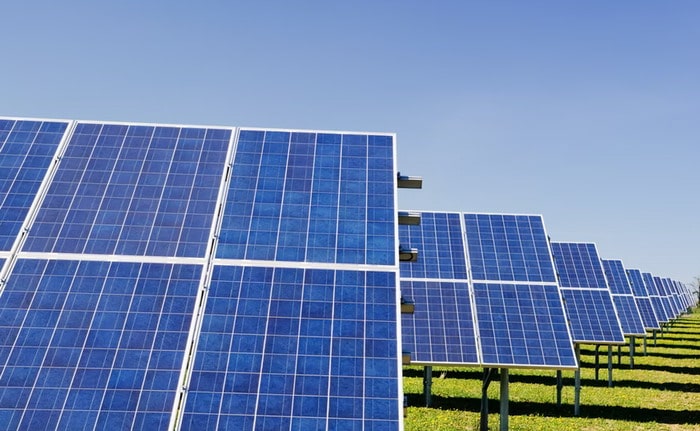6 Clean Energy Sources that are Set to Change the World

With the climate crisis becoming a more pressing issue than ever, it is becoming increasingly important for us to identify sources of clean energy. This is because the world’s reliance on fossil fuels is a major cause of climate change, due to it being one of the largest producers of carbon dioxide emissions.
Despite this, fossil fuel production is still set to increase substantially over the next decade. It is therefore critical that some of our alternative energy sources are adopted on a wide scale.
Here are some of the most popular clean energy sources available right now, that can help us tackle the challenge of climate change.
Solar
Solar energy involves the capturing of energy from sunlight, which can then be converted via technology into heating, electricity, or hot water. Solar panels use so-called “solar cells” to achieve this. Solar energy specifically has a number of specific advantages as an alternative to fossil fuels.
One of them is its sustainability. Due to solar energy being dependent on the sun, it is functionally limitless. Solar is also one of the cleanest sources of energy currently available, therefore being appealing from both an environmental and public health perspective.
Individuals can even take advantage of solar energy by installing panels themselves. And while this carries a significant upfront cost, many governments subsidize it, and it can save you a lot on energy costs, in the long run.
Wind
Wind power is generated through the use of large turbines, which capture wind before converting them into energy. Like solar power, wind energy is fully renewable and does not cause CO2 emissions, meaning it is highly appealing from an ecological perspective. It is also by far the most efficient form of renewable energy that has been developed so far, at close to double the efficiency of the next-best sources.
Additionally, turbines are very cheap to produce, in comparison with other forms of clean energy. As such, they have already seen large-scale adoption in areas with high amounts of wind, such as the North Sea.
However, there are also several drawbacks associated with wind energy, which pose significant barriers to its widespread use.
First of all, utility-grade wind farms require vast amounts of space to produce sufficient energy for large-scale use. Despite their lack of emissions, wind turbines are highly noisy, and as such, cities often oppose the construction of nearby wind farms.
These factors mean that wind energy is often produced far away from where it is going to be used, incurring substantial transportation costs. This consequently limits one of the major advantages of wind power, which is its cheapness.
Secondly, due to their reliance on wind, turbines are not suitable for many regions, especially in warmer climates. In consideration of these factors, we will likely require other energy sources in addition to wind to successfully replace fossil fuels.
Hydroelectricity
Hydroelectric power converts the energy produced by currents of flowing water into electricity. Perhaps the most well-known producers of this type of power are hydroelectric dams, which capture energy through the use of large underwater turbines.
However, a major advantage of hydroelectricity is its versatility, since it can be produced using large-scale infrastructure such as dams, as well as on much smaller scales. Because it only requires a source of water, hydroelectric power can also be generated in most regions of the world and is more consistently reliable than solar or wind energy.
These potential benefits mean that hydroelectric power could be a highly impactful alternative to energy sources that produce large amounts of emissions. Yet, numerous changes to their current design must occur for them to be viable in this way.
Most notably, this is because hydroelectric turbines themselves can have a substantial energy cost. Consequently, many hydroelectric dams, such as the Hoover Dam in the US, actually consume more energy than they can produce for use. Nevertheless, the advantages of hydroelectricity mean that this energy source has exciting potential.
Geothermal
Large amounts of heat are produced naturally deep below the Earth and trapped underground. This can be observed in various natural phenomena such as volcanoes and hot springs. Geothermal energy seeks to exploit this by converting this into heating or electricity.
This is achieved through the use of turbines, which are powered by steam created from heated water below the surface. A major advantage of geothermal energy is its space efficiency, as systems can be installed entirely below the ground.
The prospect of electricity created by geothermal energy has thus become highly attractive, especially to areas where it is in abundance, such as Iceland. The main obstacle to its use right now, like with many alternative energy sources, is its expensiveness. Not only are geothermal systems costly to construct, but due to being underground, they are also highly vulnerable to earthquakes and other natural disasters.
Hydrogen
Hydrogen does not occur naturally as an individual gas and is instead normally bonded to another element, such as in water. Interestingly, clean energy can be produced through the act of separating hydrogen from other elements, such as oxygen from water. Hydrogen can then be burned as a clean fuel source, or converted into fuel cells, as an alternative to batteries. As a result, hydrogen power has many potential uses for mankind.
One particular exciting application for hydrogen is its use in small-scale passenger aircraft, for instance.
Unfortunately, one of the most popular processes for producing hydrogen fuel involves the use of hydrocarbons. However, new methods are also being developed and adopted at a rapid rate, including solar processes, electrolysis, and even hydrogen-producing microbes.
Biomass
Biomass refers to organic matter produced from dead plants and animals. The most ubiquitous example of biomass is wood, which has been used as a fuel source for thousands of years. What’s more, recent technological advancements have dramatically broadened the potential applications of biomass.
From an environmental standpoint, perhaps the most significant of these is the development of biofuels from methane, which can be used to generate electricity, and potentially even power cars.



